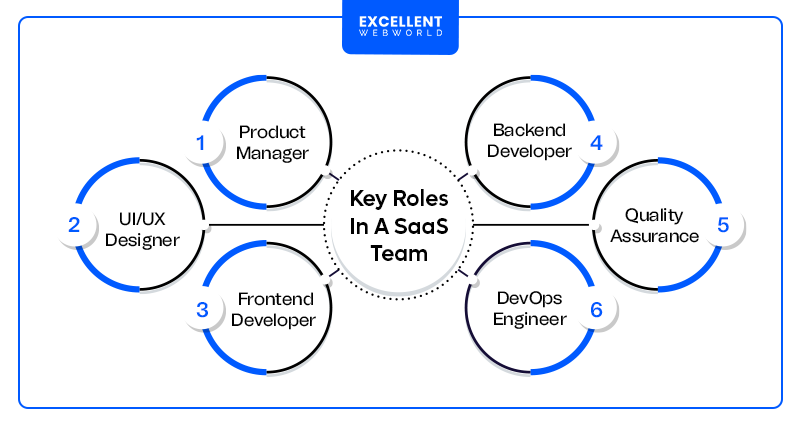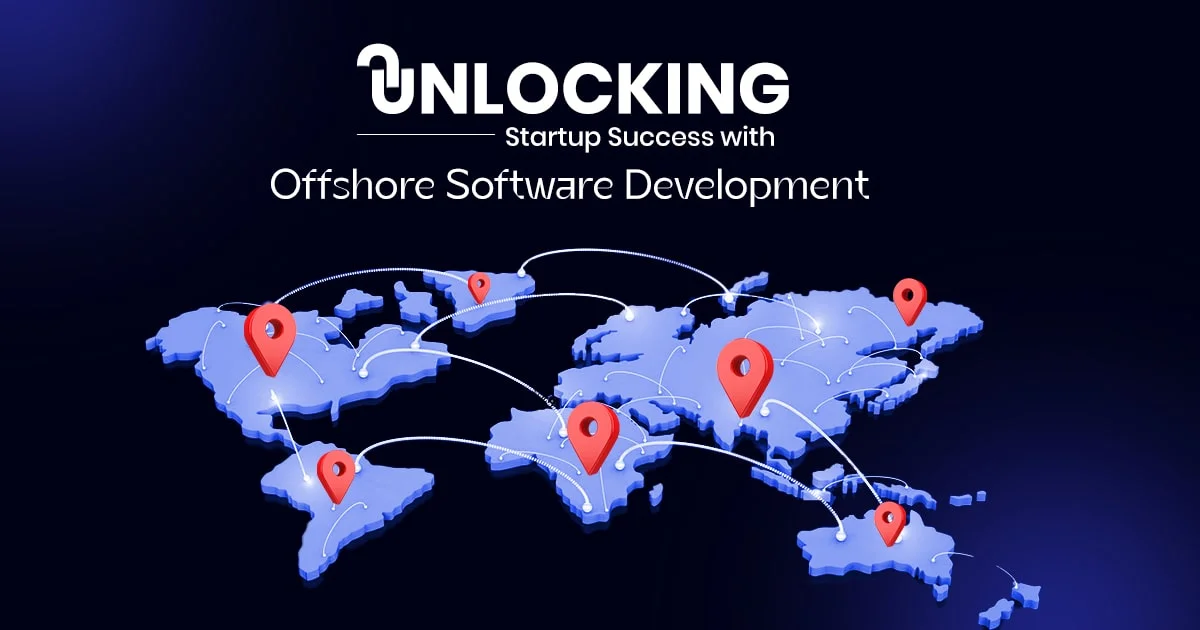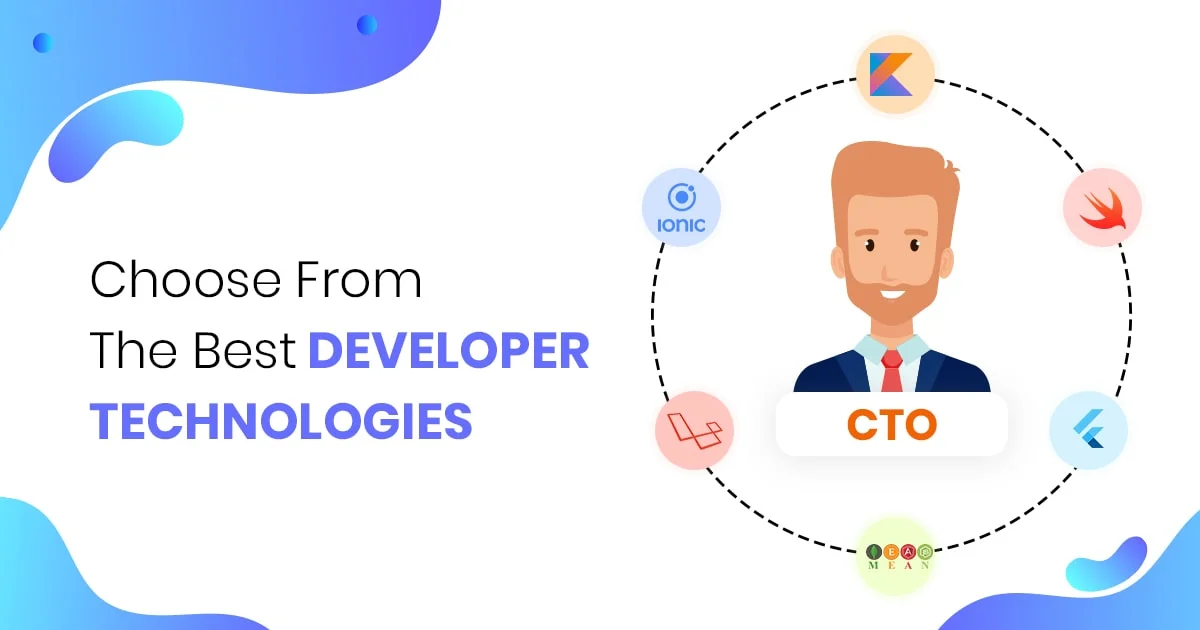Five years ago, my team and I built and launched our SaaS application on the market, hoping it would disrupt the industry. However, reality hit hard when the application was shared among the users.
However, like other promising SaaS startups, we also listened carefully to our target audience and made significant changes to the product based on their feedback. This pivot led to an application that is now running successfully in more than 40 countries.
Based on our experience, we can say with confidence that SaaS is here to stay and will be one of the most profitable business models around, as the statistics confirm. The SaaS industry is expected to reach $1.23 trillion by 2030. (Source: Fortune Business Insights)
We’ve learned the hard way about SaaS development, but you don’t have to. This guide shares our key lessons to help you avoid common mistakes and capitalize on today’s market opportunities.
What is SaaS Application Development?
SaaS application development creates a software program that customers can access over the internet, eliminating the need for a traditional setup.
Unlike conventional software applications that require downloads and local storage, SaaS software development services deliver features through web browsers.
What is a SaaS product?
Simply put, it’s software built on three foundational pillars:
While traditional software ties users to specific devices, digital products in the SaaS model free them from these constraints. SaaS offers complete, ready-to-use solutions rather than infrastructure components, unlike general cloud-based application development.
The market showcases impressive examples across industries:
These cutting-edge software solutions demonstrate the capabilities of SaaS.
Now that we recognize the fundamentals of SaaS application development, let’s build on that by exploring its benefits for businesses and end-users.
Why SaaS? Core Benefits for Businesses and End Users
The SaaS model offers applications over the Internet, eliminating the need for complex installations and hardware management while presenting current, cutting-edge digital solutions and services that grow with your business needs, created and supported by expert SaaS development services.
Here are the core SaaS development benefits for businesses and end-users:
1. Business Benefits
(A) Recurring Revenue & Lower Infrastructure Costs
The SaaS model transforms how you monetize your software solutions. Instead of one-time income, you benefit from predictable, recurring subscription revenue that helps improve customer retention and business stability.
You’ll additionally reduce infrastructure costs—no extra investment in costly servers or protection personnel. By following this software development trend, you pay for what you use most effectively.
(B) Faster Deployment and Scalability
One key advantage of SaaS development is rapid deployment. Traditional software can take months to implement, while SaaS applications may be operational within days.
As your enterprise grows, your SaaS infrastructure scales easily—simply adjust your subscription instead of buying additional hardware.
This flexibility is particularly evident when comparing web-based vs. cloud-based app architectures, where cloud solutions offer better resource elasticity and deployment options, which favor SaaS apps.
(C) Better Analytics and Customer Insights
SaaS platforms provide real-time visibility into how clients use your product. These insights help you understand consumer behavior, identify pain points, and highlight key capabilities that can be essential for making informed product choices.
2. End-User Benefits
(A) Accessibility Across Devices
Users can access SaaS solutions from anywhere with an internet connection. The experience across various gadgets will remain steady, whether you use the app on a laptop, phone, or tablet, improving remote work collaboration.
(B) No Manual Updates or Installations
All updates in the SaaS product occur in the background, so users always have the latest version available with no effort. It eliminates version control problems and reduces IT support issues.
(C) Pay-as-you-Go Flexibility
SaaS solutions development allows end-users to experience flexible pricing that aligns with their needs. Users can start with a basic plan and upgrade as their business’s needs change. It permits you to limit upfront funding and enables small organizations to access agency-grade software, which could have been financially out of reach.
Now that you realize the benefits of using SaaS apps, let’s explore the special types of SaaS and how they’re transforming businesses across various industries.
Popular Types of SaaS Applications and Use Cases Across Industries
SaaS application development provides numerous solutions that help teams streamline operations, reduce working expenses, and enable efficient scaling.
Understanding the various types and their industry use cases can help you discover opportunities in your SaaS mobile app development for a startup in this thriving marketplace.
1. Horizontal vs Vertical SaaS
(A) Horizontal SaaS:
(B) Vertical SaaS:
2. Industry-specific Solutions
(A) Fintech
Financial SaaS platforms simplify banking operations, payment processing, and investment management. These solutions help financial institutions reduce operational costs while enhancing customer service through automated offerings and data-driven insights.
(B) Healthcare
Healthcare SaaS addresses precise challenges in patient care, digital fitness records, and telehealth services. These systems follow strict industry regulations, even as they improve the efficacy of care and administrative procedures through SaaS based healthcare application development.
(C) HR
HR SaaS streamlines recruitment, onboarding, payroll processing, and performance management. These structures centralize worker data and automate routine responsibilities, allowing HR departments to focus on strategic tasks.
(D) Legal
With legal SaaS products, you can control case documentation, customer billing, case studies, and compliance. Law firms leverage these technologies and seek SaaS platform development services to build a lawyer consulting app that reduces administrative overhead.
(E) EdTech
Educational technology platforms facilitate virtual studying, examination evaluation, and monitoring of student engagement. These solutions help educational institutions expand their reach while providing personalized learning experiences.
3. Successful SaaS Examples
By studying those successful models, you can roll out your SaaS business to address real market needs and deliver measurable value to your target clients.
With a clear view of how SaaS apps drive value across industries, the next step is understanding how to bring one to life. Let’s walk through the method of building a SaaS.
How to Develop a SaaS Application: Step-by-Step Process
Building a successful SaaS product requires a methodical approach that strikes a balance between technical excellence and market needs.
Steps to Build a SaaS Application
The end-to-end software development process for SaaS applications follows a framework that can be adapted to your business needs.
Step 1: Product Discovery & Market Validation
Before writing a single line of code, thoroughly validate your SaaS concept:
This comprehensive study will help you refine your technique and build a SaaS app that meets market needs.
Step 2: Feature Planning (MVP vs Full Product)
Prioritize features to build your Minimum Viable Product (MVP). The MVP must include the critical capabilities that address the central issue you’re trying to solve.
You aim to get a working product to market quickly so you can gather honest user feedback. It will allow you to develop relevant SaaS application features.
Step 3: UI/UX Design Workflows
A seamless digital experience is critical for SaaS adoption and retention:
Step 4: Backend & Frontend Development
Backend development forms the foundation of your SaaS application. Choose a scalable architecture that could grow with your consumer base.
Step 5: QA & Testing
The quality assurance of SaaS apps requires both automated and manual testing procedures to ensure reliability and overall performance.
Step 6: Post-Launch Monitoring & Updates
Product launch is simply the beginning of your SaaS journey. Establishing a strong monitoring and update method is crucial for long-term success.
Tools & Methodologies for SaaS Application Development
1. Agile, DevOps, and CI/CD
Agile methodologies are ideal for SaaS development, allowing teams to iterate quickly based on user feedback.
These practices form the foundation of modern SaaS application development services.
2. SaaS Development Platforms
Modern cloud platforms notably reduce the complexity of building and scaling SaaS applications.
Selecting the right platform is a crucial choice for any startup. Contact a reputable SaaS application development firm like us so that it can approach the task strategically, balancing development speed with long-term scalability.
Now that you understand the steps to construct a SaaS application, the next essential step is knowing what to include. Let’s dive into the key features that make a SaaS product stand out.
Key Features Every SaaS Product Should Include
Successful SaaS products solve specific problems while providing a world-class user experience. In today’s competitive landscape, funded startups must prioritize essential features that address consumer needs while enabling sustainable growth.
1. User registration and roles
Create an intuitive onboarding with a simple sign-up workflow and easy-to-understand user management. Allow customers to add team members and assign appropriate permissions without complex technical steps.
2. Subscription management & billing
Implement transparent pricing and flexible subscription options. Your billing system should easily handle upgrades, downgrades, and custom plans. It will help mitigate modern business challenges with a modern digital-first approach.
3. Role-based access control
Define granular permissions to control what one-of-a-kind users can see and do. This crucial security characteristic in building a SaaS product prevents unauthorized access while accommodating organizational hierarchies.
4. Dashboards and analytics
Provide graphical representations of key metrics and actionable insights. Users value data that helps them track progress and make informed decisions.
5. API integrations
Enable connections with other tools through robust APIs. Custom SaaS development shines when your product plugs seamlessly into existing workflows.
6. Customer support channels
Offer multiple support alternatives, including help documentation, chatbots, and live support. Quality customer support differentiates your SaaS application development solutions from your competitors.
7. Security & data encryption
Implement strong security protocols and data governance practices. Reliable SaaS application management builds trust through proper encryption, regular audits, and adherence to relevant regulations.
Now that we have explored the crucial functions that outline a successful SaaS product, let’s examine the technical foundation that makes these functions viable by diving into architecture and infrastructure issues.
Technical Architecture and Infrastructure for SaaS Development
The foundation of any successful SaaS, PaaS, or IaaS software lies in its technical architecture. Your infrastructure alternatives will determine scalability, performance, and your ability to serve clients successfully while keeping costs within budget.
1. Core Components
(a.) When building a SaaS cloud application development project, you must first decide on your multi-tenancy approach:
(b.) Selecting the right tech stack is critical. Popular options include:
(c.) For hosting, major providers offer specialized services for SaaS web application development:
2. DevOps & Performance
(a.) Implement these essential DevOps practices:
(b.) Establishing CI/CD pipelines streamlines your SaaS development platform workflow by:
3. Security Considerations
(a.) Security isn’t optional when you hire dedicated software developers. Focus on:
(b.) Before launching your project, a custom software development company can help you develop comprehensive backup and disaster recovery plans.
Ready to construct a robust SaaS infrastructure? Partner with SaaS experts like us, who offer SaaS app development services to navigate technical alternatives optimally, avoid costly mistakes, and accelerate your path to the market.
With a strong technical foundation, the focus shifts to the crew responsible for building and scaling the solution. Let’s dive into the structure and skills a SaaS team wants.
SaaS Development Team Structure and Skill Requirements
Assembling the right group is crucial when building a SaaS app. Your development teams should have the right balance of technical stability, innovative troubleshooting, and business acumen to create a product that generates revenue and scales correctly.
1. Key Roles for Your SaaS Team
2. In-house vs. Outsourced Teams
While hiring in-house gives you better management and builds institutional knowledge, partnering with skilled SaaS app developers through outsourcing can lower initial application development costs and accelerate the development process. Consider a hybrid approach for excellent outcomes, retaining core talents in-house while outsourcing specialized needs.
3. How to Manage and Scale Your Team?
How you structure your SaaS teams isn’t just operational—it also immediately influences your costs. Now, let’s look at how competencies, roles, and selections affect the SaaS Android app development cost and the iOS app development cost.
SaaS Development Costs: What Influences Your Budget?
A minimum viable product (MVP) can range from $60,000 to $150,000, while a full-fledged SaaS application might cost between $200,000 and $500,000.
Cost Breakdown According to Development Phases
Understanding how your budget is allocated across different development phases helps with planning. Most SaaS development services follow this cost distribution pattern:
| Component | Percentage of Budget | Total Cost (USD) |
|---|---|---|
| Design | 15-20% | 5,000-30,000 |
| Development | 40-60% | 20,000-100,000 |
| Infrastructure | 10-15% | 1,000-5,000 per month |
| Testing | 10-20% | 5,000-20,000 |
| Maintenance | 15-25% | 5,000-10,000 per month |
While people always keep SaaS app maintenance costs in mind, they often forget about adding licensing and third-party integration costs. It typically accounts for 8-12% of overall SaaS development budgets but can significantly reduce time to market.
Cost Breakdown According to Team Type
Your choice of team structure significantly impacts the cost of creating an app for SaaS project outcomes. Each approach comes with different pricing models and total development costs:
| Team Type | Pros | Cons | Total Cost (USD) |
|---|---|---|---|
| In-house | Complete control, better communication | Higher costs, longer recruitment time | 150,000-200,000 |
| Outsourcing | Lower costs, specialized expertise | Less control, potential communication challenges | 50,000-150,000 |
| Hybrid | Balanced approach, scalability | Management complexity | 40,000-180,000 |
Cost Breakdown According to Geographical Region
The geographic location of your development resources also plays a significant role in determining the cost. The cost to hire app developers varies significantly across regions:
| Region | Hourly Rate (USD) |
|---|---|
| USA | 50-80 |
| Canada | 40-60 |
| Eastern Europe | 30-50 |
| Western Europe | 40-70 |
| India | 20-40 |
| Australia | 50-70 |
Ways to Optimize Cost
Choosing the proper SaaS development company with industry experience allows you to balance quality and price range constraints.
Development costs are often driven by the challenges teams encounter during the process. Understanding those hurdles is key to coping with your budget successfully—let’s explore the most common ones.
Challenges in SaaS Development and How to Overcome Them
Building a SaaS app involves navigating innumerable obstacles that could derail even the most promising startups. Recognizing those challenges helps you develop effective strategies to overcome them before they impact your growth.
Technical Challenges
(a.) Scalability remains one of the biggest challenges in SaaS development.
Your architecture must handle increasing loads without performance degradation.
(b) Latency issues can be frustrating for users.
Optimize database queries, implement caching mechanisms, and utilize CDNs to deliver content more quickly.
(c.) Security breaches can destroy trust instantly.
Implement strong authentication, conduct regular cloud security audits, and adhere to data safety policies.
Business Challenges
(a.) Customer churn directly impacts revenue sustainability.
Create an exceptional SaaS experience through responsive support, continuous product improvements, and regular communication.
(b.) Fierce competition requires constant differentiation.
Focus on solving specific problems better than competitors, rather than attempting to match every feature.
(c.) Monetization strategy affects long-term viability.
Experiment with pricing strategies that align with consumer price perceptions while ensuring sustainable business operations.
How To Future-Proof Your SaaS Product?
Build a SaaS Product with Excellent WebWorld That Truly Lasts
Want a SaaS product that grows with your business for years to come? The proper SaaS mobile app consulting company differentiates between brief failure and lasting success.
Your commercial enterprise needs a partner who knows what you’re trying to build. Our expert team at Excellent Webworld has helped dozens of startups flip awesome ideas into money-making products. As a top SaaS application development company, we focus on what matters most to you: quality, speed, and systems that can grow.
Don’t waste time and money on solutions that break down. Work with SaaS software development companies that stand behind their work long after launch day.
Ready to build something that lasts? Book your free 30-minute call today to discuss how to bring your SaaS vision to life.
FAQs
A minimum viable product (MVP) can range from $60,000 to $150,000, while a full-fledged SaaS application might cost between $200,000 and $500,000.
The ideal tech stack depends on specific needs. Popular combinations include React or Angular with Node.js, Python with Django or Flask, or .NET Core with SQL databases.
When you create a SaaS application, development typically takes 4 to 12 months from concept to launch. A basic MVP might take 3-4 months, while feature-rich enterprise applications can require 12 months or more.
Companies that build a SaaS product should choose in-house if they have the technical expertise and want control; otherwise, they should outsource if they need to launch quickly, lack technical resources, or have budget constraints.
Common mistakes include neglecting user experience, poor market research, overlooking scalability, inadequate security measures, and failing to plan for maintenance expenses.

Article By
Mayur Panchal is the CTO of Excellent Webworld. With his skills and expertise, He stays updated with industry trends and utilizes his technical expertise to address problems faced by entrepreneurs and startup owners.







